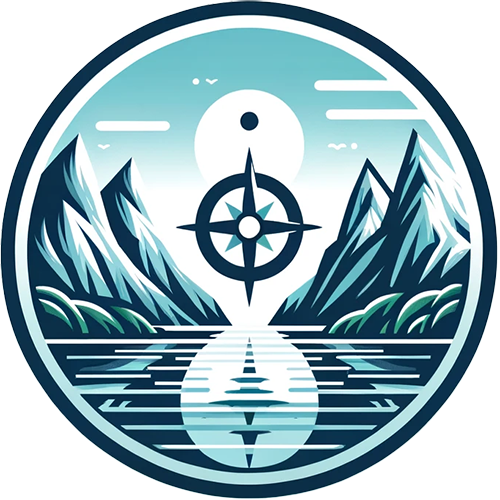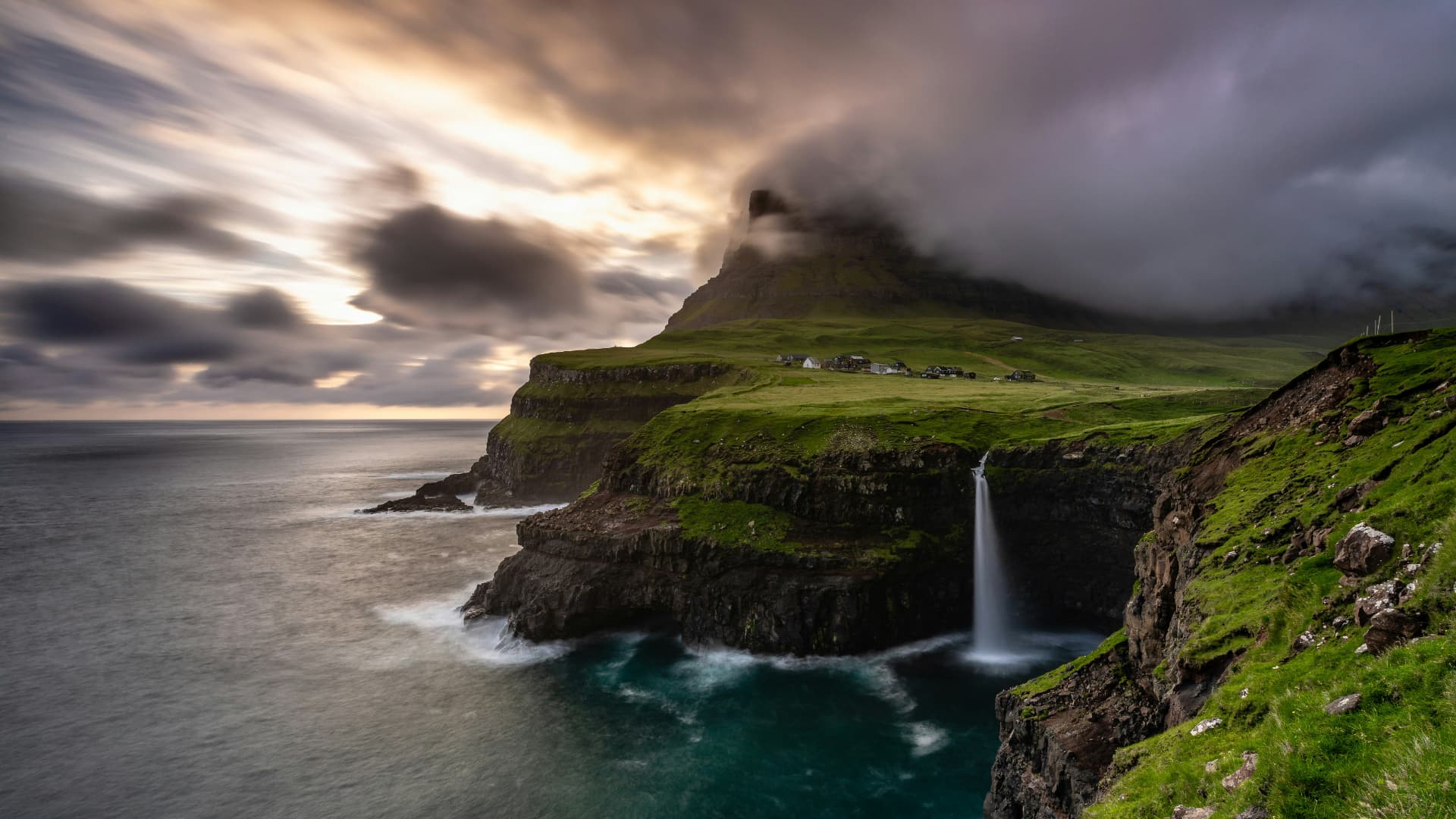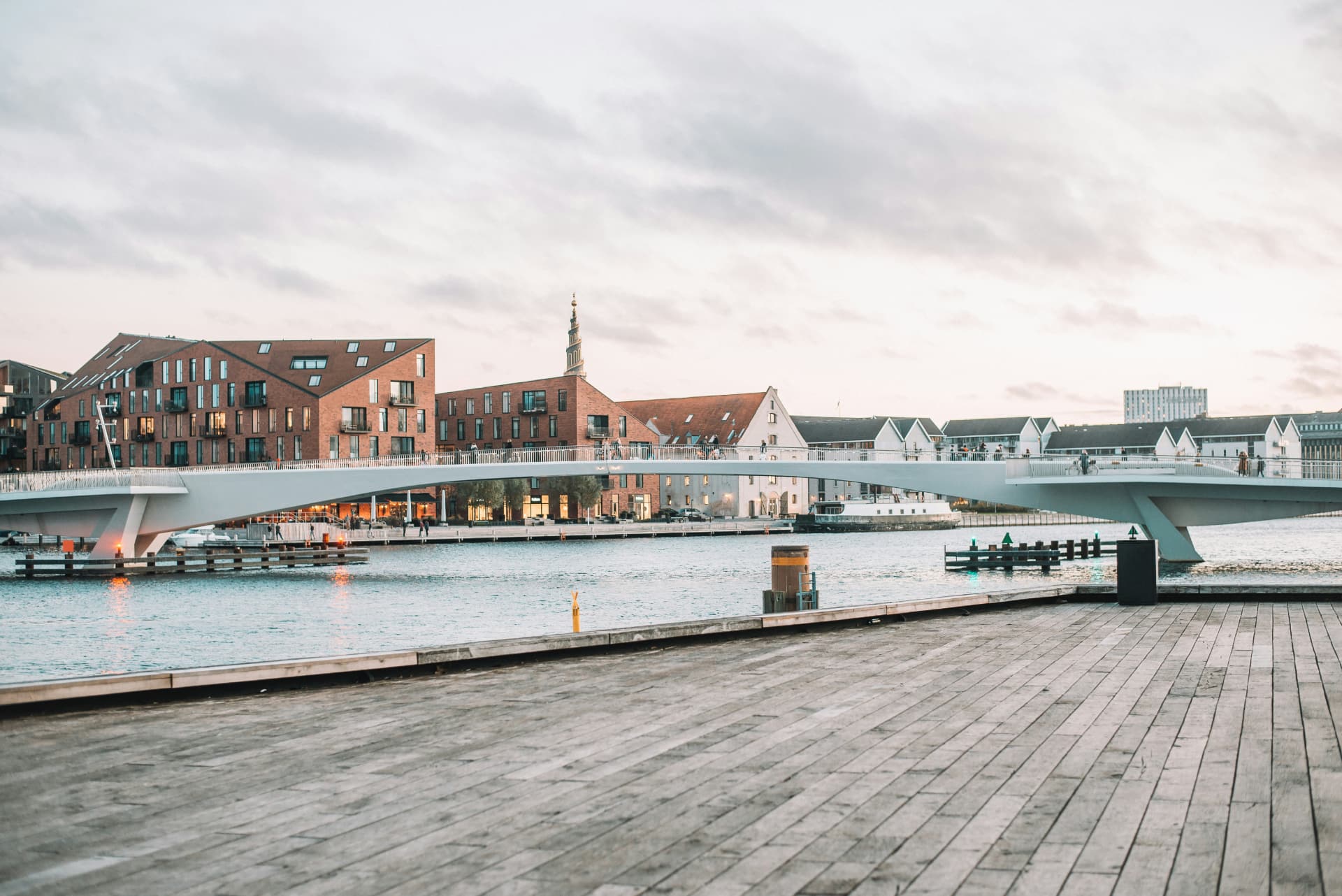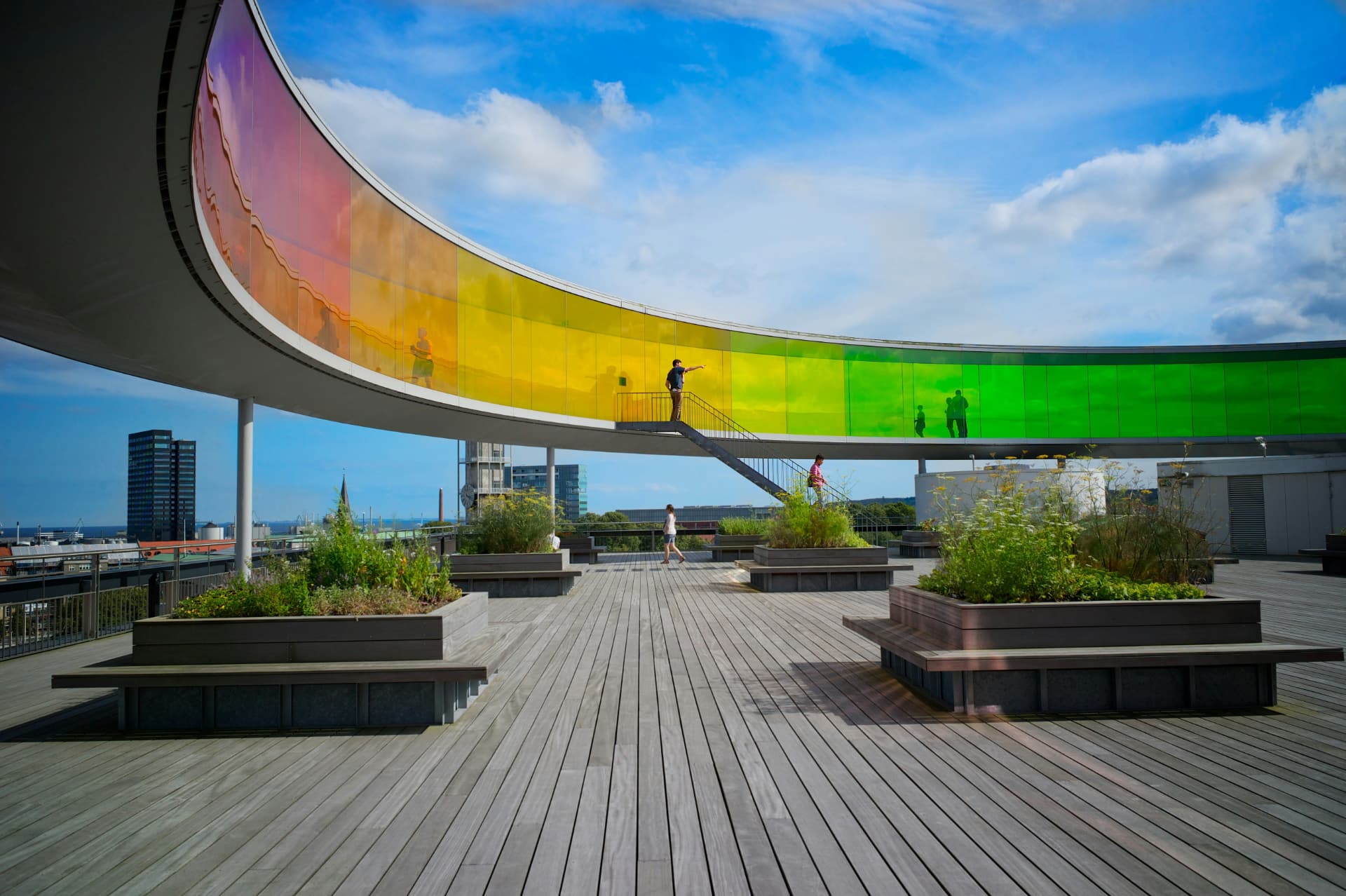Denmark, a nation characterized by its extensive coastline and myriad islands, offers a patchwork of unique landscapes and cultural experiences that beckon to be explored. From the sunny shores of Bornholm in the Baltic Sea to the rugged, windswept cliffs of the Faroe Islands, each Danish island has a distinctive character and story that make them worthy of a visit. Beyond the well-known image of Copenhagen’s colorful streets and the mainland’s Viking heritage, these islands present a quieter, yet equally captivating side of Danish life.
This journey through Denmark’s islands will not only highlight their natural beauty and historical sites but will also delve into the vibrant cultures and traditions that make each one unique. We will explore the local crafts, meet the people who keep the traditional ways alive, and uncover the best ways to experience each island’s charm.
Whether you’re a nature lover, a history enthusiast, or a culture seeker, the Danish islands offer a diverse array of attractions that can cater to all tastes. So, pack your bags and prepare for an adventure that will take you through some of the most scenic and inspiring parts of Denmark.
Join us as we embark on a journey to explore the rich tapestry of landscapes and cultures found across Denmark’s islands, promising an unforgettable addition to your travel bucket list.

The Allure of Danish Islands
Denmark’s array of islands each offers its own unique draw, from serene landscapes and rich historical narratives to vibrant local cultures and traditions. With over 400 named islands, of which about 70 are inhabited, Denmark’s islands vary from well-connected communities bustling with activity to quiet, secluded havens where nature holds sway.
Geographical Diversity and Accessibility
Each Danish island has its distinct geographical identity. For instance, the flat, fertile farmland of Funen contrasts sharply with the rugged cliffs and dramatic coastlines of Bornholm and the Faroe Islands. This diversity ensures that every visitor can find an island that matches their taste for adventure, relaxation, or cultural exploration.
Travel between these islands is facilitated by an excellent transportation network. Regular ferry services, bridges, and small local flights make island hopping a feasible and enjoyable part of the Danish travel experience. For real-time schedules and booking, visitors can check out Ferry Services in Denmark for comprehensive options.
Rich Historical Sites
The Danish islands are steeped in history, each telling its part of Denmark’s broader story. For example:
- Bornholm is dotted with ancient ruins, medieval churches, and fortresses like Hammershus, the largest castle ruin in Northern Europe.
- Funen is often called Denmark’s garden and is known for its beautiful old manors and the Egeskov Castle, one of the best-preserved Renaissance water castles in Europe.
Cultural Richness
The cultural life on the Danish islands is vibrant and deeply rooted in local traditions. Many islands have their own festivals, such as the Ærø Jazz Festival or Samsø’s annual Potato Festival, which celebrate local music, food, and community spirit. These events offer travelers a chance to experience local life and participate in traditions that have shaped the identity of these island communities over centuries.
Islands like the Faroe Islands, although technically not part of Denmark but a self-governing Danish territory, are known for their unique language and cultural practices which are celebrated through music, dance, and national costumes at various annual festivals.
Natural Beauty and Outdoor Activities
The Danish islands offer abundant opportunities for nature lovers, from the wooded hills of Bornholm to the bird cliffs of Mykines in the Faroe Islands. Activities range from hiking and biking to bird watching and kayaking, allowing visitors to get up close with nature in often unspoiled settings.
- Bornholm: Known for its cycling routes that traverse its diverse landscapes.
- Faroe Islands: Offers some of Europe’s most dramatic hikes, such as the trek to the Lake over the Ocean (Sørvágsvatn).
Exploring these islands provides not just a retreat into nature but an immersive experience into environments that have been preserved and cherished through Danish conservation efforts.

Spotlight on Bornholm: The Baltic Jewel
Bornholm, often referred to as the “Baltic Jewel,” is located in the Baltic Sea to the east of the rest of Denmark and south of Sweden. This island is renowned for its unique geological features, abundant sunshine, and a rich cultural heritage that makes it a standout destination among Denmark’s islands.
Overview of Bornholm
Bornholm distinguishes itself with its diverse landscapes that range from rocky cliffs and dense forests to white sandy beaches that are rare in Denmark. The island’s climate is somewhat milder than the mainland’s, contributing to its reputation as a sunnier location, which is particularly appealing during the summer months.
Key Attractions on Bornholm
- Hammershus Castle: Visit the majestic ruins of Hammershus, Northern Europe’s largest medieval fortress, perched dramatically on cliffs offering expansive views over the Baltic Sea. More information can be found on their official site.
- Round Churches: Bornholm is famous for its four round churches dating back to the 12th century, which are not only significant as religious sites but also served as fortifications against invaders.
- Almindingen Forest: One of Denmark’s largest forests, offering numerous trails for hiking and biking, and home to Echo Valley and the mysterious Gamleborg Viking fortress.
- Beaches: Due South, the beaches such as Dueodde offer visitors some of the finest sands and dune formations, ideal for sunbathing, swimming, and water sports.
Travel Itinerary for Bornholm
- Day One: Start with a visit to the Hammershus Castle ruins to soak in the history and scenic views, followed by a tour of one or two of the iconic round churches.
- Day Two: Spend a day outdoors in the Almindingen Forest, exploring its natural beauty on foot or by bike, and possibly venture to the Gamleborg fortress.
- Day Three: Relax at Dueodde beach or participate in water activities if the weather permits. Explore local arts and crafts in small towns like Svaneke and Gudhjem.
Local Crafts and Cuisine
Bornholm is also a hub for artisans, with numerous glassblowers and pottery workshops open to visitors. The town of Svaneke, in particular, offers galleries where local crafts are sold. Culinary enthusiasts will enjoy Bornholm’s smokehouses where you can taste traditionally smoked herring, a local delicacy.
- Culinary Tip: Try the ‘Sol over Gudhjem’ (Sun over Gudhjem), a dish named after the town, which is smoked herring on rye bread topped with raw onion and egg yolk.
Bornholm not only offers a retreat into nature but also an immersive experience into the rich cultural traditions of Danish island life. It’s a perfect blend of relaxation, adventure, and cultural enrichment.

Discovering the Faroe Islands: A Nordic Paradise
The Faroe Islands, an archipelago of 18 volcanic islands situated between the Norwegian Sea and the North Atlantic Ocean, are known for their dramatic cliffs, ancient traditions, and a tight-knit community that values its Viking heritage. Governed as an autonomous territory of Denmark, the Faroe Islands offer a distinct blend of Scandinavian and island culture, making it a fascinating destination for travelers seeking solitude and unspoiled nature.
Introduction to the Faroe Islands
The Faroe Islands are characterized by their rugged terrain, which includes steep mountains, winding fjords, and expansive sea cliffs that are among the highest in Europe. The islands’ remote location contributes to their mystic and almost untouched landscapes, which are frequently enveloped in mist, adding to their allure.
Key Attractions in the Faroe Islands
- Tórshavn: Explore the capital and largest city, Tórshavn, known for its colorful old town, Tinganes, where grass-roofed houses line narrow, winding lanes. Here, the modern meets the traditional, with a vibrant arts scene and bustling nightlife that contrast with its historic setting.
- Mykines: The island of Mykines is famous for its incredible birdlife, including puffins. It’s an ideal spot for birdwatching and hiking, with paths leading through lush landscapes to awe-inspiring ocean views.
- Sørvágsvatn: Hike to Sørvágsvatn, the largest lake in the Faroe Islands, which appears to hover above the ocean in an optical illusion that fascinates many visitors. The hike also offers stunning views of the Atlantic and the surrounding cliffs.
Travel Itinerary for the Faroe Islands
- Day One: Spend your first day in Tórshavn, visiting the historical district of Tinganes and enjoying the local art galleries and cafes. Don’t miss the Nordic House, a cultural center presenting a wide range of artistic and cultural events.
- Day Two: Take a trip to Mykines to experience the island’s abundant birdlife and stunning natural beauty. Ensure you have sturdy walking shoes for the hike to the lighthouse.
- Day Three: Visit Sørvágsvatn, where you can enjoy a day of hiking and take in the breathtaking views that define the Faroe Islands.
Cultural Insights and Local Experiences
The Faroese people are proud of their Viking ancestry, which influences their festivals, music, and daily life. Traditional Faroese chain dancing, storytelling, and local handicrafts provide insight into the islands’ rich cultural fabric.
- Festivals: Participate in local festivals like Ólavsøka, the national holiday of the Faroe Islands, which features a series of events including boat races, sports competitions, and cultural performances.
Practical Visitor Information
Travel to the Faroe Islands can be challenging due to the weather, so it’s essential to plan accordingly. Flights and ferries are the main modes of transport to and from the islands, with detailed schedules available on Visit Faroe Islands.
The Faroe Islands offer a unique opportunity to experience a way of life that has remained relatively unchanged over the centuries, set against some of the most spectacular natural scenery in the world.

Island Culture and Traditions: Celebrating Danish Heritage
The Danish islands are not just remarkable for their natural beauty and historical sites; they are also vibrant centers of cultural expression and tradition. Each island has its own unique cultural identity, which is celebrated through various arts, crafts, and festivals. In this section, we delve into the rich tapestry of culture that makes each island distinctively charming and culturally rich.
Cultural Heritage of the Danish Islands
- Folk Music and Dance: Many Danish islands have a strong tradition of folk music and dance, which often come alive during local festivals. For example, Fanø is famous for its annual folk music festival, which attracts musicians and dancers from across Scandinavia and beyond.
- Traditional Festivals: Each island often has its own set of traditional festivals that celebrate its history and culture. On Ærø, for instance, maritime heritage is celebrated during the Marstal Sea Festival, which features sailing races, seafood, and live music.
Local Crafts and Artisanal Practices
The islands are also home to a wide range of crafts, influenced by both necessity and the natural resources available. These crafts not only reflect the artistic expressions of the islanders but also their practical ingenuity.
- Bornholm Pottery and Glass: Bornholm, besides its natural and architectural beauty, is renowned for its pottery and glass-making studios. The island’s rich deposits of clay have made it a center for ceramic arts, while its glassworks are celebrated for their intricate designs and vibrant colors.
- Fanø Lace: On Fanø, lacemaking is a traditional craft that has been passed down through generations. The delicate patterns are often inspired by the island’s natural surroundings and are highly prized for their craftsmanship.
Participating in Cultural Activities
Visitors have the opportunity not just to see but also to participate in these cultural traditions:
- Workshops and Classes: Many islands offer workshops where visitors can learn local crafts such as pottery, lace-making, or traditional cooking techniques. These workshops provide a hands-on way to connect with the culture.
- Cultural Centers and Museums: Islands like Læsø and Samsø have cultural centers and museums dedicated to preserving and showcasing local history and crafts. These institutions are treasure troves of knowledge and offer guided tours that enrich the visitor experience.
Impact on Island Communities
The preservation and promotion of these cultural traditions play a crucial role in maintaining the unique identities of the Danish islands. They not only help sustain local economies but also foster a sense of pride and continuity among the island communities.
Encouraging Cultural Tourism
Cultural tourism offers a sustainable way for these islands to develop economically while ensuring that their traditions and lifestyles are respected and maintained. Visitors who engage with the local culture in a meaningful way contribute to this sustainability by providing economic support through tourism.

Practical Tips for Island Hopping in Denmark
Island hopping in Denmark is an enchanting way to explore the country’s diverse landscapes and rich cultural heritage. Whether you’re planning a leisurely journey through the islands or seeking an adventurous exploration, these practical tips will help ensure a smooth and enjoyable experience.
Planning Your Island Hopping Itinerary
- Choosing Islands: Depending on your interests, you may want to focus on islands known for their natural beauty, such as Bornholm or the Faroe Islands, or those rich in history like Funen or Zealand. Consider the time of year, as some islands are more accessible and offer more activities in certain seasons.
- Travel Duration: Determine how much time you want to spend on each island. Some, like Bornholm, can warrant a longer stay due to their size and the variety of attractions available.
Transportation Between Islands
- Ferry Services: Ferries are a common mode of transport between the Danish islands and offer a scenic route to your destination. For schedules and ticket booking, check operators like Molslinjen (Molslinjen.dk) which services several major routes.
- Flights: For farther islands such as the Faroe Islands, flights are necessary. Atlantic Airways provides flights from Copenhagen to the Faroe Islands (Atlantic Airways).
- Local Transport: Once on the islands, consider renting a bike or a car for more flexibility. Public transportation options like buses are available but may have limited schedules especially on smaller islands.
Accommodations
- Booking in Advance: Especially during peak tourist seasons, it’s advisable to book accommodations well in advance. Options range from hotels and B&Bs to local guesthouses and Airbnb.
- Staying with Locals: For a more authentic experience, consider staying in guesthouses or Airbnb rentals where you can interact with locals.
Dining and Local Delicacies
- Local Cuisine: Each island often has its specialties, like freshly smoked fish on Bornholm or lamb dishes in the Faroe Islands. Be sure to try local restaurants and eateries to experience these authentic flavors.
- Food Festivals: Check for any food festivals happening during your visit. These events are great opportunities to sample a variety of dishes and local products.
Tips to Enhance Your Experience
- Cultural Events: Look into any cultural events or festivals taking place during your visit. Participating in these can greatly enrich your travel experience.
- Packing Essentials: Weather can be unpredictable, especially on coastal islands, so pack layers and waterproof clothing. Also, include comfortable walking shoes for exploring natural terrains and historic sites.
- Stay Connected: While disconnecting might be your goal, having a working cell phone or internet connection can help in navigating and accessing online resources like maps and attraction tickets.
Environmental Considerations
- Respect Local Environments: Many Danish islands are sensitive ecological zones. Always follow local guidelines regarding wildlife interactions, trail usage, and waste disposal.
Embracing the Island Adventures of Denmark
As we wrap up our comprehensive guide to exploring the Danish islands, it’s clear that each island offers its own unique blend of natural beauty, historical richness, and cultural vibrancy. From the rugged cliffs of the Faroe Islands to the sunny beaches of Bornholm and the historical depths of Funen, Denmark’s islands provide a diverse palette of experiences that cater to all types of travelers.
Island hopping in Denmark is not just about moving from one island to another; it’s about immersing yourself in distinct cultures, engaging with local communities, and experiencing the natural environments that shape the lifestyles of the inhabitants. Each island tells its own story, offering insights into Denmark’s past and present, and perhaps even hints at its future.
Whether you are drawn by the call of the wild, the allure of ancient ruins, or the warmth of island hospitality, the Danish islands offer an array of adventures that promise both relaxation and discovery. As you plan your journey, remember that the true beauty of island hopping lies in the slower pace and the opportunities to connect deeply with the places and people you encounter.
Final Thoughts and Encouragement
We hope this guide inspires you to explore the Danish islands, to seek out their hidden gems, and to appreciate the subtle beauties that you’ll find away from the mainland’s busier tourist paths. Denmark’s islands are like chapters in a book, each one inviting you to read a little slower, look a little closer, and enjoy a little longer.
Whether you’re a seasoned traveler or a curious explorer, the Danish islands offer a mosaic of experiences that are as enriching as they are delightful. So pack your bags, set your itinerary, and prepare for an unforgettable journey into the heart of Denmark’s island life. The islands are waiting to tell you their stories, and they promise to leave you inspired, refreshed, and maybe even a little transformed.





0 Comments